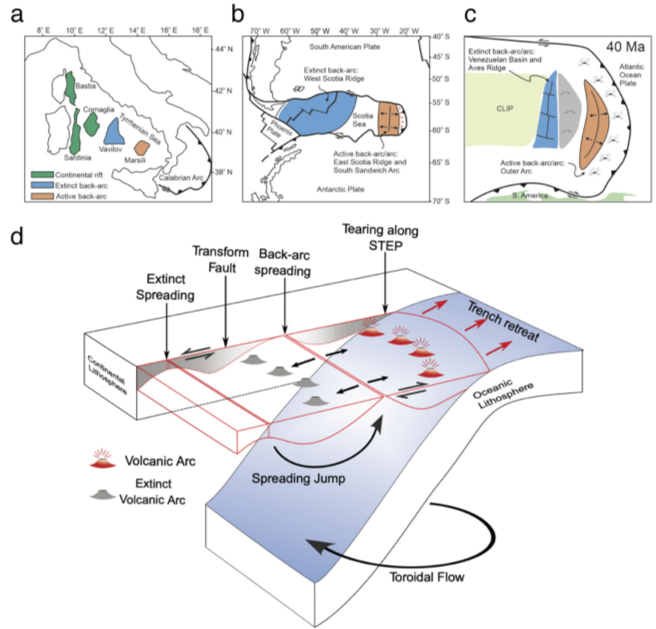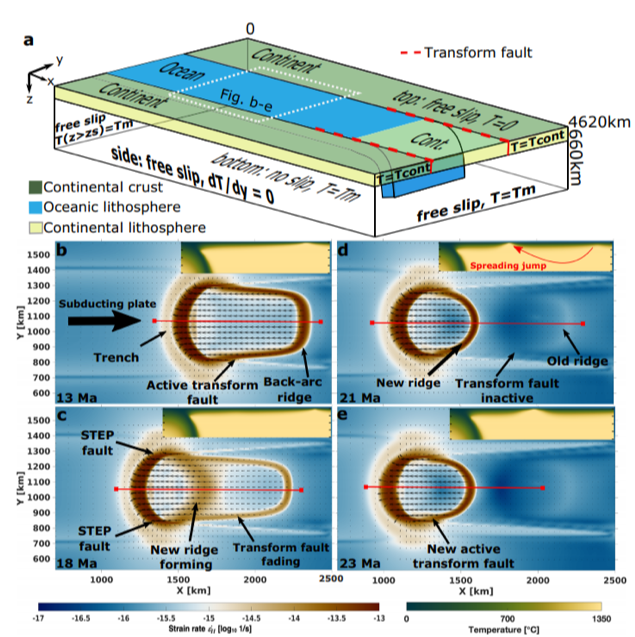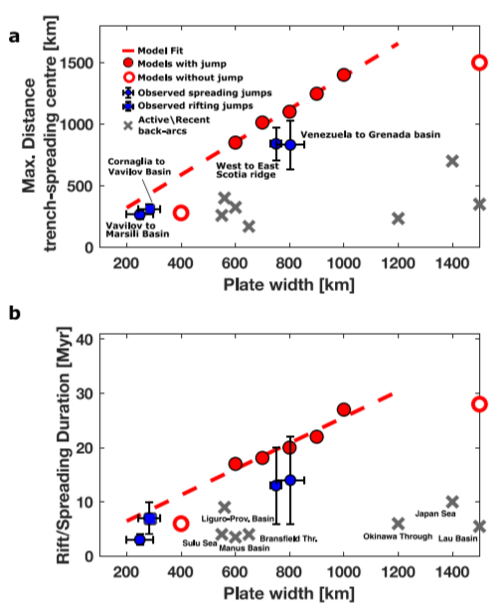Subduction zones are places on Earth where tectonic plates sink into the mantle creating mantle flow and large lithospheric deformation. Subduction trenches are not stable features and they often move away from the upper plate (i.e., trench retreat). This generates extension in the upper plate and, if extension is large enough, the formation of back-arc spreading centres. However, these spreading centres are active only for a few million years as they often migrate closer to trench as the trench keeps retreating (Fig. 1). Schliffke and co-authors developed 3D numerical models to better understand the process of ridge jumps in narrow subduction zones.

The 3D numerical models simulate subduction of a narrow plate with a retreating slab (Fig. 2). The models reproduce the formation of a first spreading centre due to upper plate extension (Fig. 2b). As the slab keeps retreating, the distance between the spreading centre and the trench progressively increases until a new spreading centre forms closer to the trench (Fig. 2d). Importantly, when the distance between the spreading ridge and the trench increases, so does the length of the transform faults that allow the upper plate to move with respect to the neighbouring plates. The longer the transform faults, the higher the total resistance along the faults and, thus, the more energy is needed for the plate to move. When a certain threshold of resistance is reached, it is more energetically favourable for the system to rupture the upper plate in a new location closer to trench. This is why spreading ridge jumps occur in narrow subduction zones.

Schliffke and co-authors performed a parametric study with varying plate widths, which showed that the length and time of the spreading ridge jump increase with increasing plate width. Their model results fit well with observations of back-arc basins of present-day subduction zones in which ridge jumps are observed (Fig. 3). This study indicates that for narrow subduction zones, the resistance along transform faults is non-negligible and, together with the strength of the lithosphere, they control the occurrence of ridge jumps in back-arc basins.

Contact: Lead author: Nicholas Schliffke (Durham University). Contact: Valentina Magni (CEED), valentina.magni@geo.uio.no
Publication details: Schliffke, N., van Hunen, J., Allen, M.B., Magni, V., and Gueydan, F. (2022). Episodic back-arc spreading centre jumps controlled by transform fault to overriding plate strength ratio. Nature Communications, 13, 582. https://doi.org/10.1038/s41467-022-28228-5.
This work has been supported by EU FP7 Marie Curie Initial Training Network ‘Subitop’, grant agreement No. 674899, by the UK National Environment Research Council (NERC grants NE/K010824/1, NE/M000281/1, and NE/H021620), and by the Research Council of Norway through its Centres of Excellence funding scheme (Project Number 223272).





